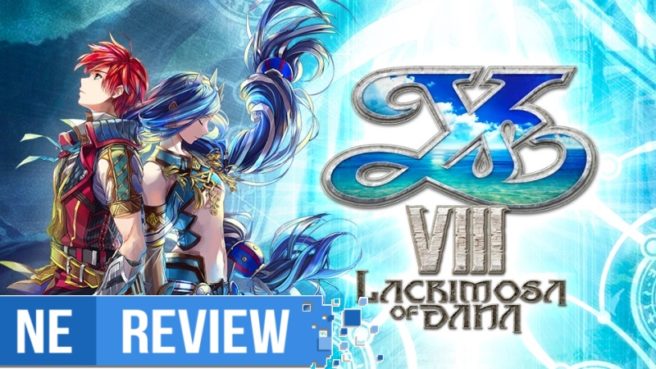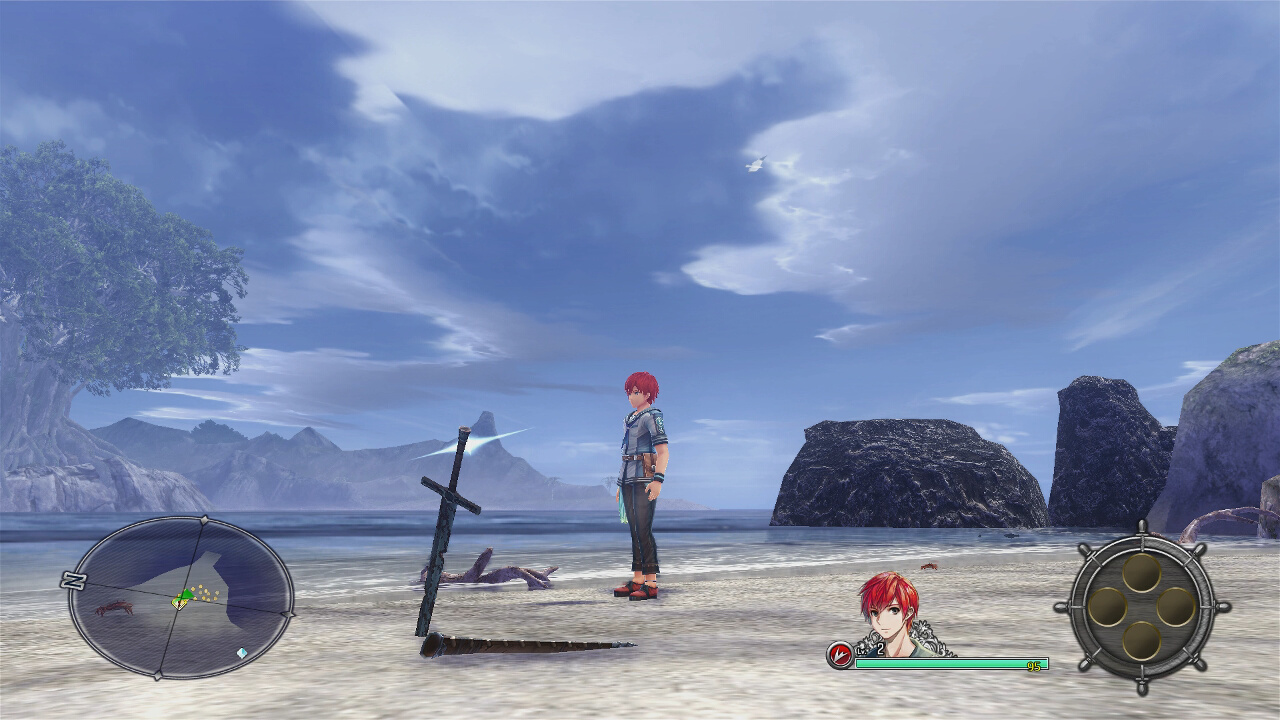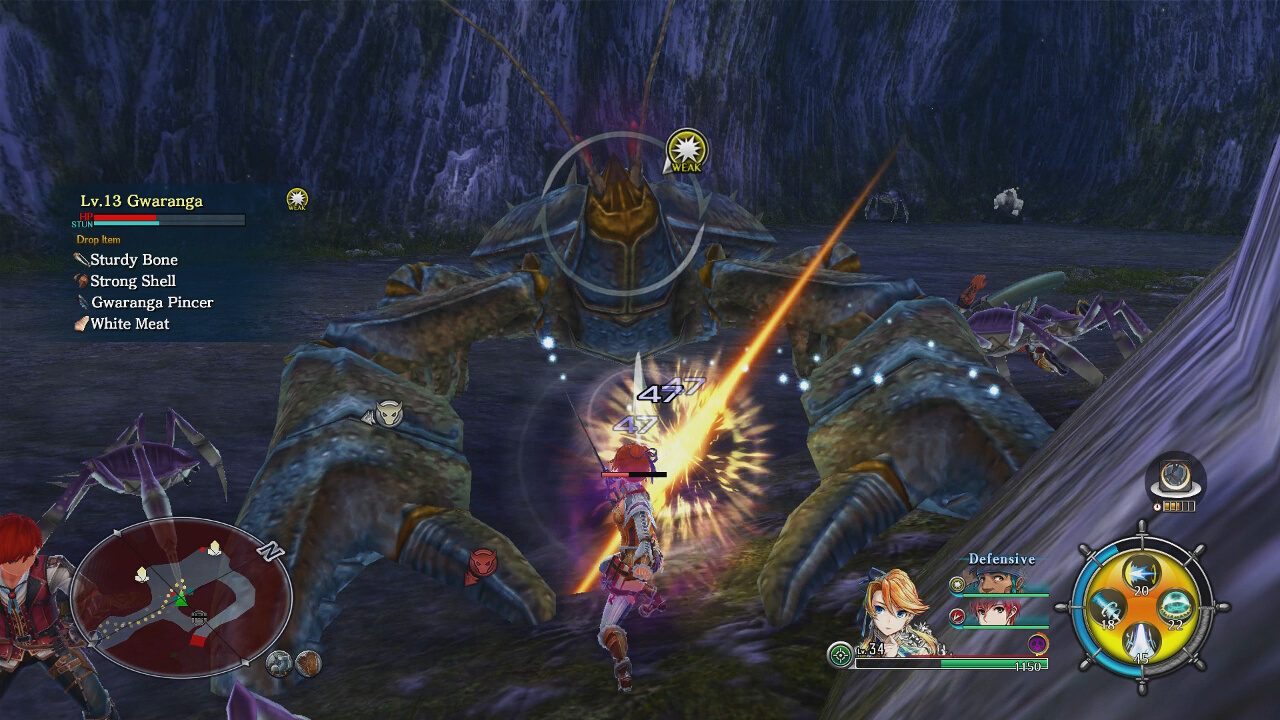That describes the surface of the combat in Ys VIII, but there are a handful of other elements that add an entirely new layer of depth that can influence combat in a number of ways. First are Flash Moves and Flash Guards. To perform a Flash Move, Adol must dodge an enemy attack at the last possible second, which slows down time for the enemy and grants Adol a burst of speed for a short period of time. A Flash Guard is similar, but instead of dodging, Adol must guard at the last second, granting him brief invincibility, critical hits, and boost to the Extra gauge. The extra gauge is a gauge that fills the more you land successful hits and kills with skill moves. Once the gauge is full, any character can perform an incredibly powerful attack. When all of these elements combine, boss battles become a fast-paced mix of running in to deal bursts of damage, then waiting for the opponent to attack in the hopes of timing your counter correctly for added benefits. While most random enemies on the field (which the game has an abundance of) are defeated without needing to employ these tactics, boss battles go much more smoothly when all of these things are executed well. However, since the on-field enemies can be a bit overabundant at times, sometimes combat can begin to drag during longer play sessions and can lead to avoiding enemy encounters at the loss of experience gained. Overall, the combat in Ys VIII feels fast, fluid, and is surprisingly deep under the surface; however, most random enemies can just be defeated through simple combat.
Another fun and engaging element of Ys’ gameplay is how you’ll spend your time outside of combat and exploration. Shortly after being shipwrecked, Adol and the other castaways create a makeshift town called Castaway Village. Castaway Village acts as a sort of central hub where Adol can get sidequests, talk to party members and villagers, buy weapons, armor, and items, as well as craft useful items for the journey. However, unlike most JRPGs where random NPCs found in whatever given town you happen to be exploring give you your objective, each character who gives you a sidequest is someone important to the main story in some way. This is another reason why having the game set on a deserted island is such a brilliant premise. Since Castaway Village is comprised of unique individual NPCs that you personally seek out and rescue, all of the sidequests feel important to improving and developing the village for Adol and the other castaways. Additionally, the more you fulfill sidequests for the castaways, the higher their approval of you becomes, granting you additional story elements and other benefits. Sidequests range from fetch quests, to monster hunts, to more story-related or town developing objectives; and each sidequest gives you various rewards for your efforts.
This leads me to what I think Ys VIII’s strongest element is: its constant feeling of rewarding progression. In a long JRPG, sometimes progression can feel slow and methodical, with a player’s only feeling of advancement being through the story. However, Ys VIII incorporates tons of elements that reward players for doing things, whether it be related to the main story or not. Want to go explore a dungeon? Here, have some really helpful armor, items, or even a castaway! Want to take on sidequests? Now your villages will open up to you more and perform tasks to help you on the journey! Want to just advance the main story? You can totally do that with no real repercussions. Plus, it’s really engaging and interesting! Whatever you decide to do Ys VIII will find some way, big or small, to reward you for the time that you put into it, which is incredibly important for any game in general but especially longer JRPGs.
However, not all of Ys VIII is fantastic. Luckily, the only real rough spots of the game come from a purely technical standpoint. The art style of Ys VIII is very Japanese, achieving an almost anime-esque aesthetic throughout its design. I personally think the art style is great, with vibrant colors and fun character and enemy designs. However, it quickly becomes clear that the Switch has a hard time keeping up with how big Ys VIII actually is. Often times you’ll end up encountering frame rate and graphical dips while crossing a huge expanse or an area with complicated geography. The dips in frame rate aren’t terribly frequent and game-breaking, but are certainly noticeable when they appear. Likewise, the dips in graphical quality do detract from the overall experience, but don’t take away too much from the game overall. My guess is that these dips in the technical aspect are in part to help Ys VIII run well in handheld mode. From what I was able to discern, both docked and handheld mode ran about the same, with maybe a slightly bigger dip in graphical quality while in handheld mode. As I said before, these shortcomings don’t hurt the overall experience too badly, but are certainly a bit disappointing regardless.
Yet, when the frame rate is solid and you have an uninterrupted moment to take in the scenery of Ys VIII, the game really is beautiful in its own way. The tropical setting of the island really comes alive thanks to vibrant colors and ambient sounds of nature scattered throughout. Additionally, the soundtrack of Ys VIII is largely fantastic, with wide variety of pieces and instrumentation, ranging to upbeat electric guitar riffs and fast drum beats, to more subdued and melodic piano pieces. The music always stands out and aids whatever scene it is there to build upon. Additionally, the voice work provided in Ys VIII is performed decently as well. Most story-related cut-scenes (and some side scenes) are fully voiced. While not the absolute best that Falcom has had to offer, the voice acting is still very charming and fun throughout, with actors also being able to carry more serious scenes as well.
The Verdict
Ys VIII: Lacrimosa of Dana is, in almost every sense of the term, a top-class action JRPG. With fast paced combat, meaningful upgrades, and an interesting story throughout, the game manages to subvert the stereotype of boring JRPGs with no real sense of progression. On the contrary, Ys VIII manages to stay engaging throughout its run-time and rewards players in countless ways for investing their time into it. Though the video game industry and games themselves have changed in the decades that Falcom has been producing games, one thing has remained fairly consistent for them: they know how to make JRPGs. And really good ones at that.
Ys VIII: Lacrimosa of Dana review copy provided by NIS America for the purposes of this review.



